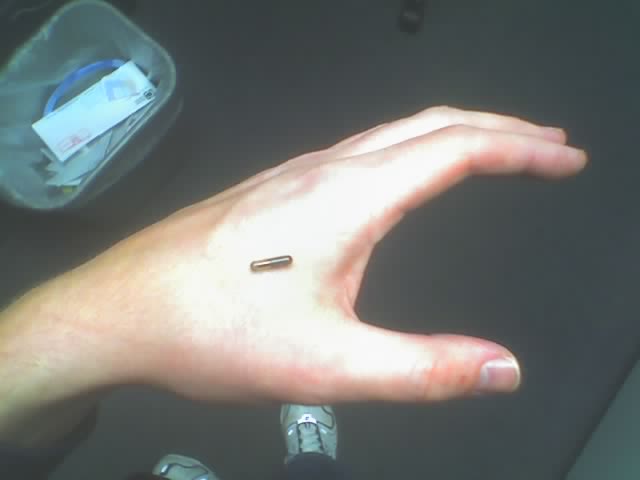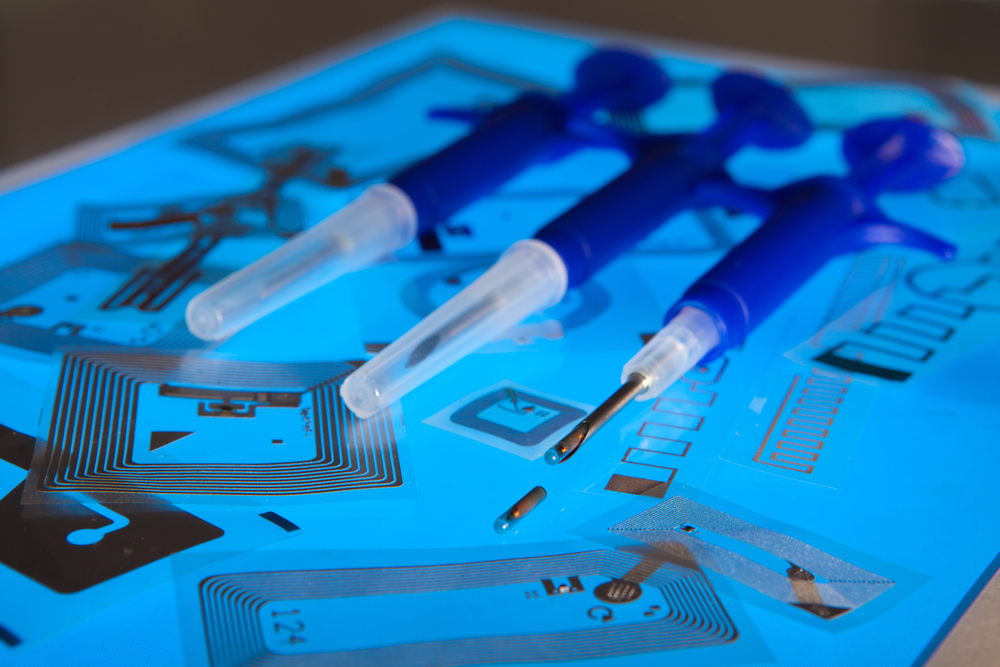Whilst many people are afraid of a move towards invasive technology, perhaps any downside risk with the use of microchip implants is far less scary that currently perceived?
Such things as genetic modification or implants that interact with the human brain cyborg-style fill many people with fear. It could be argued that this angst may be real or perceived.
Read More: A peek inside the transhumanist agenda
Whichever way you look at it, there’s no doubt that the implications for society are far reaching in those instances. Therefore, it makes sense that any moves in that direction should be painstakingly slow. However, when it comes to an implant that doesn’t interact directly with the body, is the consideration of risk versus reward much more straightforward?
What are Microchip Implants?
Microchip implants are passive devices involving integrated circuits or RFID transponders encapsulated in silicate glass and implanted sub-dermally in the body. The housing of the device is such that the integrated circuitry doesn’t come in contact with the body and therefore, there is no bodily reaction and the device itself is protected. A wealth of data can be stored on the device.
Read More: Private data collection: from Facebook apps to a generation of microchipped biohackers
Passive implants have been used for many years with livestock and pets. The benefits mean that adoption in terms of use with animals continues to expand. The RFID implant can provide information on the ownership of an animal whilst combating theft, authentication of the breed and blood lines whilst enhancing traceability. Could the same apply to microchipped humans?
It’s not such a new technology but when it comes to humans, there has been very little in the way of uptake and adoption. The first human implant was carried out in 1998 – over twenty years ago. Since then, usage has largely been confined to biohackers.
Whilst there has been little commercialization of such devices where humans are concerned, that could be on the cusp of change.
Startups to Bring Implants to the Mass Market
There are now signs of commercial adoption through a number of fledgling companies. Amongst them is Sweden-based Biohax. The Scandinavian startup participated in a trial where 50 employees in a company based in Wisconsin volunteered to have the devices implanted. More recently, employers are showing interest in following suit. Bellingham, WA-based Vivokey is another startup that is also spearheading the commercial application of the technology.
Use Cases

In the case of Biohax, its devices have been utilized by employers with their employees consent for access control. Companies are looking to improve their security and streamline their security systems. With a bio-chip implant, employees can access sections of an office or factory with the use of their scannable RFID chip implant rather than having to rely upon access cards and keys, etc.
Read More: How to hack a human 101: ‘organisms are algorithms,’ World Economic Forum Davos
By the same token, employees can access their work computers and phones by unlocking them with a wave of their hands. In this way, both virtual and physical security are assured.
They have also been used in Biohax’s home market for payment for travel on the Swedish Rail network. Near Field Communication (NFC) is utilized as part of the implementation, the same technology as is used for contactless bank cards.
Meanwhile, Dr. Patrick Kramer of Vivokey expressed his view of a microchipped future in a podcast last year. Kramer carries the novel title of Chief Cyborg Officer with the company. In his view, the company are trying to solve three major challenges. He wants to see the company’s devices negate the need for ordinary people to carry house or car keys.
Additionally, through the use of passive implants, he sees an opportunity to consign the humble wallet to the scrapheap. All the while, Kramer maintains that the implants have the potential to provide the basis for the next generation of devices.
As in the work environment, implants can also be used in a domestic setting to open house doors, lock/unlock and start a car. The tags can also prove useful in providing the ability to store emergency medical information too.
Read More: Medicine or poison? On the ethics of AI implants in humans
Blockchain is another use case identified by Vivokey that has potential when it comes to passive implants. The cryptocurrency space is struggling to make its technology palatable to the mass market. One of the key issues is the use and control of private cryptographic keys.
Whomever possesses the key has access to the funds contained within that address. Similarly, crypto addresses are not very user friendly. Both can be stored on an implant and with a scan, the address can be provided to others so as they can send payment. The opposite can also be achieved with the wearer enabled in making payment with cryptocurrency once the tag is scanned.
Read More: India’s ban on paper money, cashless societies, and the loss of freedom
Both Vivokey and Biohax are moving towards the commercialization of a concept that pioneering biohackers have implemented previously.
20 Years in the Making – What’s the Delay?
Given the wealth of benefits the technology can bring in making peoples lives easier and systems smarter, it begs the question as to why we are only beginning to see commercialization now?
Concern over security seems to have been the main issue. Earlier devices were not encrypted as they are now. Of course, with technology we have to be mindful that device security always has the potential to be compromised. What man can put together, he can also reverse engineer.
That said, in its current state, it seems that the technology is not being used to the full benefit of society.
Broader fears have also played their part in retarding the rate of adoption of the technology. In 2006, Colombian president Álvaro Uribe proposed the idea that Colombian migrant workers could have such devices implanted on entry to the U.S. in discussions with two U.S. Senators. There is potential for tracking despite the fact the devices use NFT with a very short range.
Over the next few years, it’s expected that the internet of things (IoT) will grow exponentially with forecasts of 75 billion networked devices by 2025. In a world crowded with networked sensors, bad actors could utilize implants to track people. Once again, it’s a case that there is the potential for the technology to be used for the good of society or otherwise.
Systems need to be put in place to monitor the implementation of the technology to ensure that society finally benefits from it.












